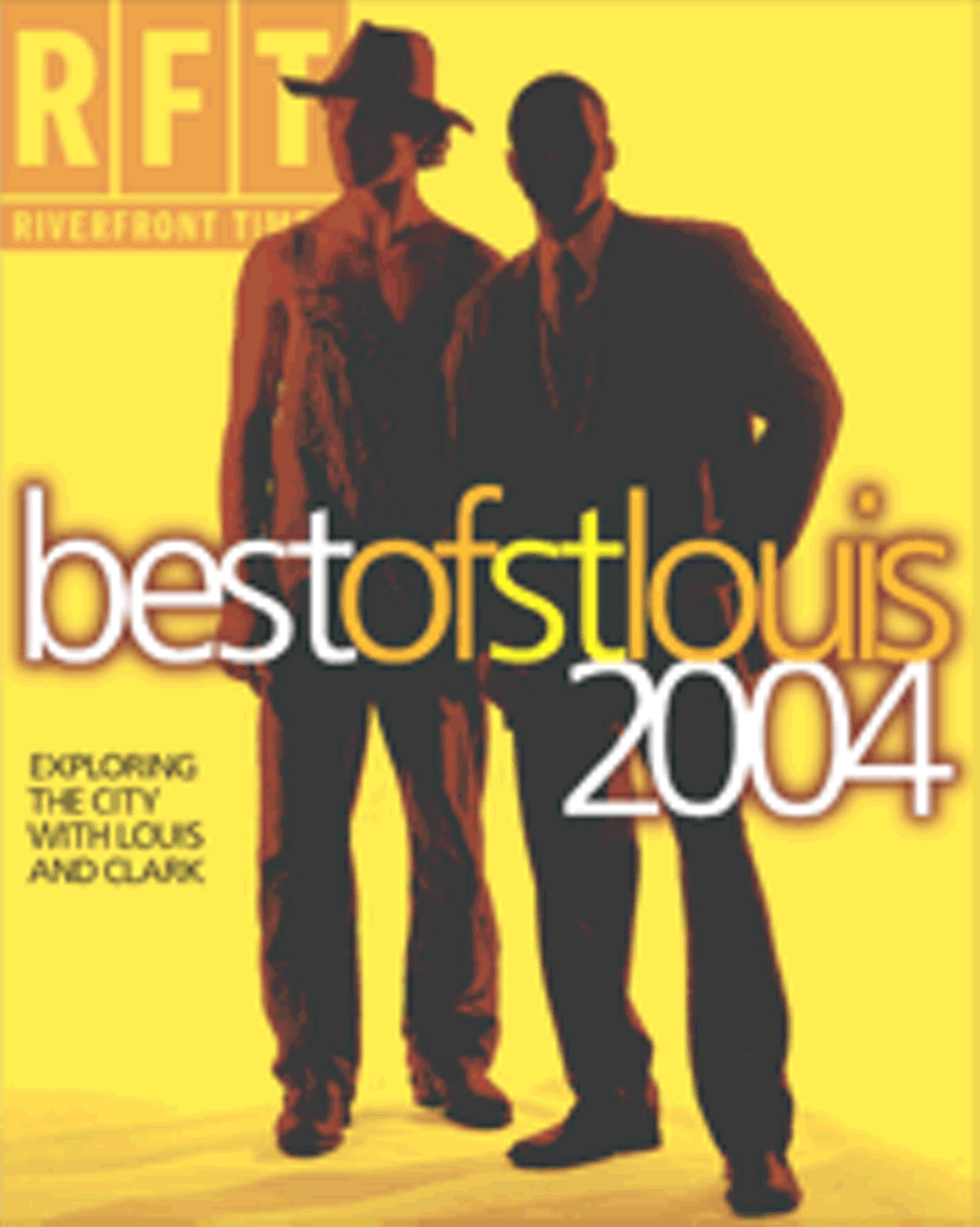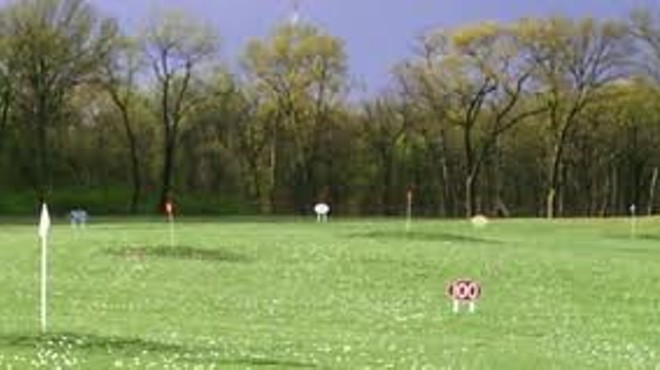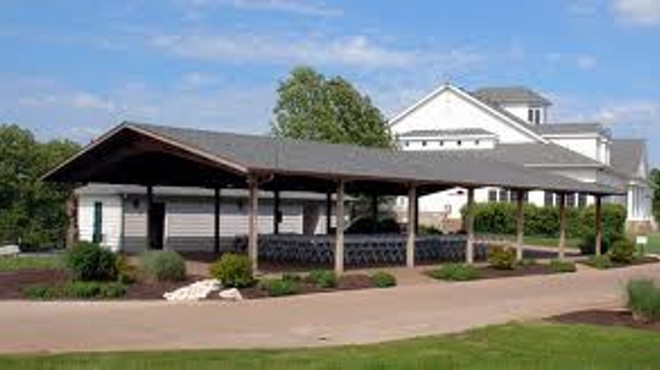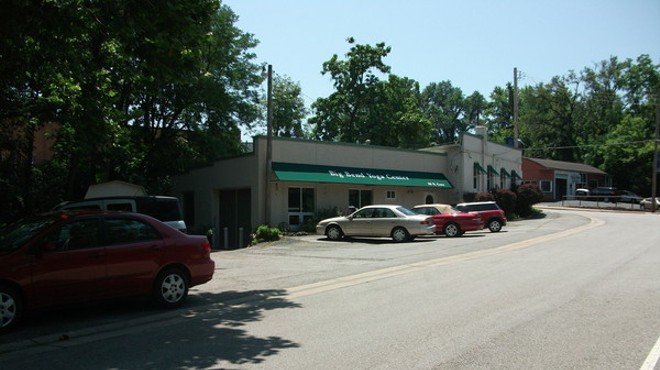Joel Quenneville, the head coach who couldn't lead the Blues into the Stanley Cup Finals no matter how big his payroll, is St. Louis' best coach? The guy who was sitting on a barely better-than .500 record when he got the ax, watching impotently from behind the bench as his "team" of "stars" struggled through one of the worst slumps loyal Blues fans have ever endured? That guy is the best coach of the past year? Damn straight. Ignore the Jack Adams award he won for the 1999-2000 season (presented to the league's best coach), and ignore that Quenneville left town with the highest winning percentage of any Blues coach in history (.585). Instead focus on the intangibles: While the ink on his pink slip was still wet, Quenneville went on one of the local Sunday-night sports shows and proceeded to talk up his love for the city and organization that he and his family had called home for almost seven years. He said not one bad word about how his team quit on him; he took the blame for failing to lead them out of the rut; he thanked St. Louis and the fans for the great years he spent here. And then he went to Prague and led Team Canada to the finals in the IIHF Men's World Championship. (Quenneville had to miss the gold-medal game -- which Canada won -- owing to a viral infection.) So don't blame Quenneville for the Blues' failings. Give him a team that wants to win -- say, the Colorado Avalanche, his new team -- and he's a finisher.
Sports anchors can be so dang clichéd. Evidence KSDK-TV (Channel 5)'s dreadful D.C. import Rene Knott and the insufferably pompous, plaster-haired Steve Savard of KMOV-TV (Channel 4). Thankfully, we have the always witty, down-to-earth Joel Goldberg to lighten up the airwaves. Goldberg and his equally competent FOX2 battery mate, Martin Kilcoyne, are a refreshing jolt of beer and bourbon compared to Savard and Knott's pre-mixed daiquiri (figuratively speaking, of course). Goldberg toes the razor-thin line between Man Show histrionics and head-first sports reporting, which is as fine a line as any to toe. In an arena dominated by Ken-doll windbags (remember when Mike Bush did sports? We don't either), Goldberg comes off as one of the guys. Sporting news shouldn't be served up any other way.
Students of the game, take note: It was Wellington Stockton Titus, a catcher for an amateur baseball team in Hopewell, Virginia, who invented the batting cage in 1907. Seems Titus wanted more time playing and less time chasing down errant pitches and fouled-back baseballs. Titus' portable cage was a big hit, and it remains so today -- especially at the popular Tower Tee. You've got to love a batting-cage complex where a replica of Mark McGwire's bat is mounted at the Sno-Cone stand across from a bin of weathered batting helmets and aluminum bats. (You can bring your own wooden one.) Tower Tee features six cages for the hard-core hardballer, equipped with iron slingers that serve up the horsehide at 40, 50, 60, 75 and 80 mph. Wednesday is White Lightning Day: Experience the joyous terror of confronting a 90 mph fastball. Batters do get plunked on occasion, but that's usually because they're hogging the plate, says Nick Swatek, who opened Tower Tee in 1967. The cage space is generous, and you can drive the ball a good 100 feet up the middle. Tower Tee, open from spring training through the World Series, also does a nice job catering to the Pee Wee League set, with three slow-pitch machines, one of which tosses a 35 mph sponge ball. At all cages, a $1 token gets you fourteen pitches. For a mere five bucks an aspiring Scott Rolen can hack at 70 pitches -- and that's a good, hard workout.
You're assaying your first shot on the tenth hole at Tee Time Family Fun Center. There's a giant alligator behind you and lions, tigers and bears hidden in the jungle terrain all around. But that's not the reason you're panicking. Here, on the tenth hole, you realize the true hazards of this unconventional course are not the sand traps, streams, waterfalls, tunnels and bridges you must navigate. No, if your stroke veers too far to the right, you're going to be playing Frogger on Interstate 55 to retrieve your ball. If you whack your shot too hard straight ahead, it might end up on the Burlington Northern train passing by on its way to Kansas. The real-life obstacles, plus all the quirky ground rules, make this course more challenging than spelling Shinnecock Hills. After you've beaten Hale Irwin's low score, check out the indoor batting cages, video arcade, bumper boats, go-carts and 3-D black-light maze.
Avid golfers often use the "enjoying nature" excuse in justifying their addiction to this unforgiving sport. Hogwash! Most golf addicts wouldn't care if they were playing on an Astro-turfed parking lot, so long as they were hitting the shiznit out of the Titleist. But in the case of No. 15 at the Missouri Bluffs, the "nature" excuse has merit. With its tee box positioned on a steep ridge some 120 feet over the fairway, this hole provides breathtaking views of the surrounding countryside. From way up there it's not uncommon to see deer and wild turkey passing like tiny dots along the valley floor below. And the hole, a 529-yard par five, has the brawn to match its beauty. The fairway and green are surrounded by sand traps and dense forest, punishing the slightest mistake with a penalty of a stroke or two. The rest of Missouri Bluffs is nearly as impressive. Designed by Tom Fazio, the course winds its way through the hills and valleys of St. Charles, hemmed by old-growth oaks. A word of advice: If you plan on playing the Bluffs, do it soon. Though the course is open to the public, management is recruiting members in a bid to take it private in the next year or so.
On a team whose stars borrow millions from God and drive Ferraris, Scott Rolen is a throwback. Indiana born and bred, the muscular third sacker is a perfect fit for a town that put the H in hoosier. While the Redbirds threw prime-time Benjamins at the quietly intense RBI machine when he came here from Philadelphia in mid-2002, that wasn't the point. Rolen sought a trade to St. Louis because he wanted to play in a town he considers "baseball heaven." He is the best third baseman in the game, by a landslide, able to hit the dirt for laser grounders and emerge to whip rocket-like throws from his knees across the diamond in time to nab even the speedy likes of the Marlins' Juan Pierre. At the plate he has led his league all season in RBI, while providing the sort of cleanup-hole protection for Albert Pujols that Barry Bonds would kill for. Rolen is the senior circuit's best all-around player -- which makes him the best Cardinal, too.
We freely admit it: Our seats at Cardinals games are always down the third-base line because it affords the best view of Mr. Albert Pujols' seat. When he raises that stick over his beautiful head and dips his knees fixin' to clout, we fervently pray to Paul Lynde that the team tailor performed a subpar job on Mr. Albert's inseam. The way his thighs and netherparts swell against the gabardine, oh, we just, oh, my oh my! Excuse us, we caught a touch of the vapors there, thinking about the possibility of another kind of breakout season. Cross your fingers for a triple, so Mr. Albert has to stop at third. We do so enjoy doubling our pleasure with a side-by-side comparison of Mr. Albert's assets with Mr. José Oquendo's. You can keep your infield and your outfield; we're fixated on baseball's best backfield.
Cardinals general manager Walt Jocketty was hesitant to trade talented but too-often-injured outfielder J.D. Drew, for fear the kid would finally come into his own and have a monster season someplace other than St. Louis. Well, Jocketty finally pulled the trigger this past off-season -- and lo and behold, a suddenly healthy Drew is having a breakout year that has him on pace to crush 30-plus homers and drive in 100 runs. And guess what: It doesn't matter. The Cardinals still have baseball's most potent offense, and Jason Marquis and Ray King have filled gaping holes (fourth starter and left-handed set-up man, respectively) on the Cards' pitching staff, while Wainwright gets groomed in Memphis to step into the big club's starting rotation if and when Woody Williams retires or Matt Morris signs elsewhere. And they're a bargain trio, to boot, leaving Jocketty with budgetary room for future maneuvers.
A yoga studio is only as great as its teachers. One could build a million-dollar studio with gently cushioned floors, perfect walls and a Surroundsound stereo system, but if the yogi's wack, it's all for naught. Put another way: Your favorite instructor could hold practice on the banks of a lagoon and you'd follow. Luckily, St. Louis is gradually catching up with the coasts in the number of studios and sessions available. Or at least there are options. It's all a matter of taste, but of the dozen-odd studios in the St. Louis area, we're still partial to Big Bend Yoga Studio in Webster Groves. It offers a wide range of classes for different experience levels, and as you progress, the options expand. Newbies take note: When we were just starting out, Big Bend's basics classes were the most reassuring and helpful of any in town -- and we tried a bunch.
Triple A Golf & Tennis Club in Forest Park just might be the best-kept secret in St. Louis. It's also home to the finest tennis courts around. The 107-year-old club has hosted three Davis Cup tournaments and was the early stomping ground for Belleville native Jimmy Connors. But forget history: What sets Triple A apart is that fourteen of its fifteen courts feature clay surfaces. And as any avid tennis player knows, clay is a much, much cooler (and slower) playing surface than hard courts -- an important factor when considering the heat and humidity of a St. Louis summer. Triple A (the name stands for Amateur Athletic Association) is tucked away among a grove of trees in the southeast corner of Forest Park (across from the Planetarium), which lends it a private-club feeling and keeps it off the Rollerblade circuit. The only time you may have to wait for a court is if you plan to play before 11 a.m. on a Saturday, when aging seniors have the run of the place. After that the courts are deserted. Triple A doesn't come cheap, with a full-day pass costing $11 ($14 on weekends), but memberships and multiday passes make a significant dent in that bill if you play regularly. Take note, however: Triple A isn't fitted with lights, so play ends with the setting of the sun.










